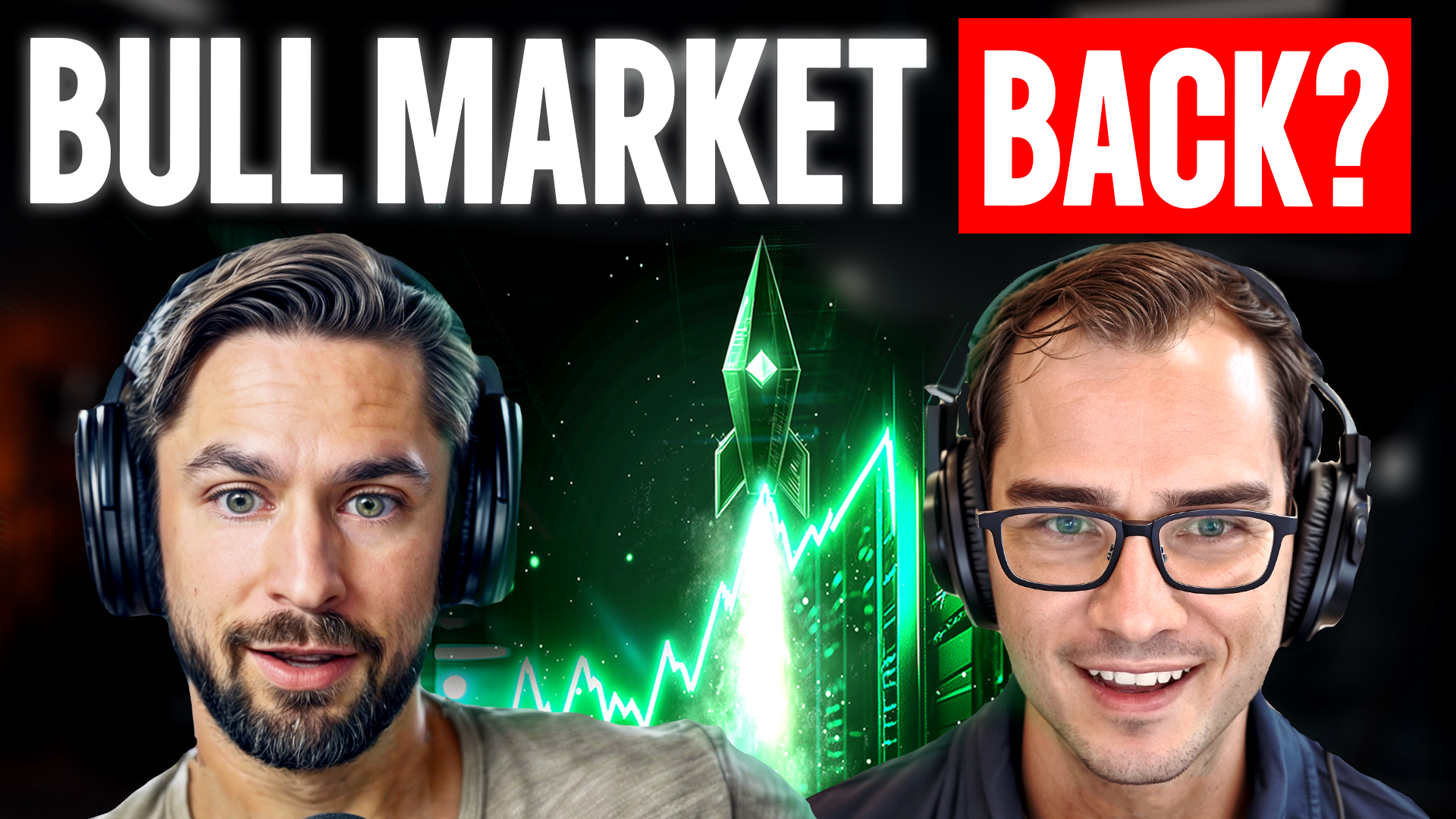The Week Crypto Got Its Mojo Back

This past week felt like the moment when a hundred threads—macro, markets, meme coins, and regulation—suddenly wove together into something coherent. If crypto had been drifting in a fog of apathy, this was the week the lights came on.
Ethereum Teleports, Markets Reprice
The headliner was Ethereum, which exploded over 50% in eight days, adding an entire Solana-sized market cap in the process. No ETF. No protocol upgrade. Just a raw market reaction.
“It was time,” Ryan quipped.
That phrase may sound glib, but it captures something deeper. This wasn’t a reaction to news—it was a rejection of apathy. ETH had been oversold, over-short, and underestimated for too long. At 0.018 BTC, the market was saying Ethereum was irrelevant. This 50% candle was its answer.
ETH’s breakout was joined by a broader market uplift. Coinbase stock jumped 30%. Meme coins roared back to life. Crypto Twitter flipped bullish almost overnight. But the spark came from beyond crypto—it came from geopolitics.
The Tariff Deal That Might Have Changed Everything
Over the weekend, the U.S. and China paused their escalating trade war, agreeing to slash tariffs and de-escalate. On the surface, it looked like a temporary 90-day reset. But Arthur Hayes and monetary historian Russell Napier argue that it was more than that. They believe it marks the quiet end of the global dollar standard as we know it.
According to Hayes, this is a pivot—not a pause. The Trump administration is shifting from tariffs to financial repression. If tariffs were phase one of a reindustrialization strategy, phase two is a stealth tax on capital—starting with a rumored 2% levy on all foreign-owned U.S. assets. That's $33 trillion worth of stocks, bonds, and real estate.
Russell Napier sees something similar coming: capital controls, bond devaluation, and a state-directed economy designed to curb the dollar’s dominance and redirect money flows. His advice: don’t own bonds. Own gold. Hayes’ version? Own gold and Bitcoin.
If this thesis is even partially right, Ethereum’s surge wasn’t speculative mania—it was repricing under a new macro regime.
Meme Coins Are Funding Startups. Maybe.
Meanwhile, in a strange and uniquely crypto twist, meme coins began funding consumer apps. New platforms like Believe.app are letting founders launch tokens alongside products. The revenue? Trading fees. The asset? Pure speculation.
Apps like a Worm-style game called Noodle or AI deepfake generator Yapper now have their own tokens. The pitch is that meme coins can replace early-stage VC capital. The more cynical take: it's pump.fun culture with better branding.
David put it bluntly: real internet capital markets will only emerge when founders can launch equity tokens backed by actual cash flow. Until then, meme coins are just another bootloader—good for attention, but not for economic gravity.
Coinbase’s Reverse Uno and the AML Trap
Coinbase revealed it had been targeted by hackers demanding a $20 million ransom in exchange for stolen customer data. Instead of paying, Brian Armstrong offered a $20 million bounty for information leading to the attackers' arrest.
The breach wasn’t particularly sophisticated—it reportedly originated with a low-wage support contractor. But it underscores a deeper problem: centralized exchanges are honeypots for hackers because they are legally required to collect sensitive data under AML/KYC regulations.
These requirements, designed to protect the financial system, have the unintended consequence of exposing users to surveillance and exploitation. If crypto is to move forward, it will need to replace these honeypots with decentralized, privacy-preserving alternatives.
A Pro-Crypto SEC?
In a surprise to nearly everyone, the SEC made a series of public statements that sounded, for the first time, not just neutral—but supportive of crypto.
The agency's official Twitter account compared on-chain securities to the shift from vinyl to digital music. Commissioner Hester Peirce proposed a sandbox to allow tokenized stock issuance and settlement on public blockchains.
This came the same week Robert Leshner’s firm, Superstate, launched its first product to do exactly that: tokenize real-world equity and integrate it into DeFi.
After years of tension, the tone has changed. The SEC may be shifting from enforcer to standards-setter—and that could open the door for real capital formation on-chain.
Where Are We Now?
This week marked a rare alignment of forces:
- Macro tides are turning against treasuries and in favor of hard assets.
- ETH is reawakening from a long slumber.
- Meme coins are colliding with the startup world.
- Major platforms like Robinhood are acquiring crypto infrastructure.
- And for the first time, regulators may be extending a hand rather than a hammer.
It’s not a bull market yet. But the foundations are shifting. And if you’re paying attention, you can feel it: crypto is once again starting to shape the world, not just react to it.